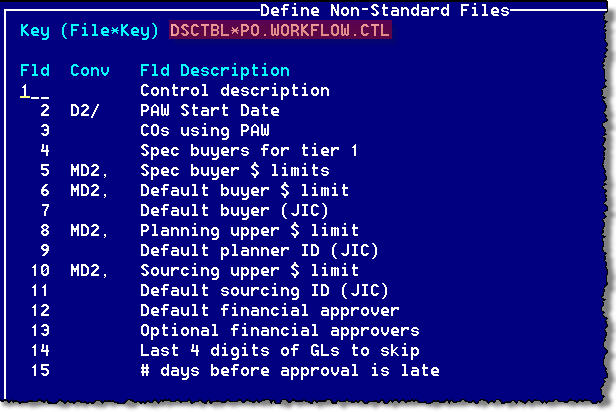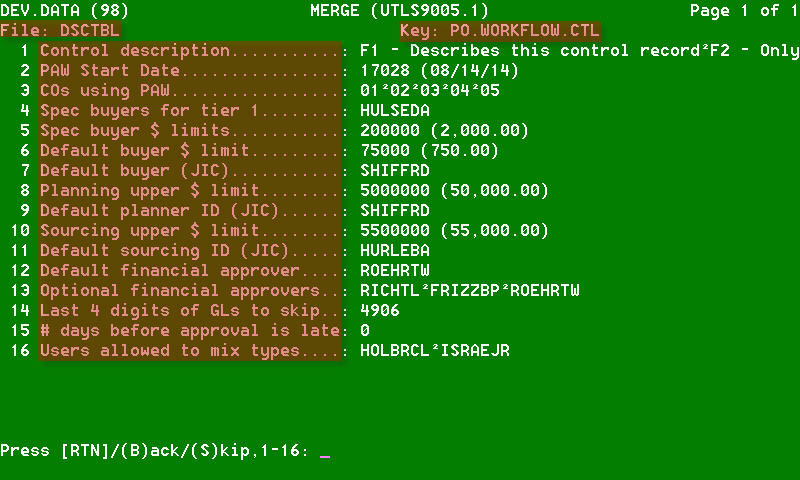Welcome to JRI's Help page for MERGE
The MERGE utility is designed to blend the data DICTs and the raw data of a record into a blended view. If a field/Dict has a conversion code, OCONVS is used to show the data both in raw form and output form. Each row of Dict/data is truncated at 80 characters, thus if there is a lot of data in a field, you will not see it all - this is by design - MERGE is meant to get a quick view of what a record looks like, not an in depth view of everything.
- How It Works
After verifying the file name, MERGE will read in all D-type dict items.
The Dict field header (F4) will be used as the prompt of the field.
If there is not a value in F4, it will use the Dict name itself.
If there are no Dicts for a field, there is no prompt (though each field is preceeded by the field number.
If there are multiple D-type dicts for a single field, it is a bit of a crap shoot as to which one you will get - the program has no idea which is the better dict to use - this is esp. bad if there are multiple types of records in a single file (like DMSECURITY) - see MERGE.DICTS.DEFN below.
- Syntax
There are muliple ways to use MERGE:
- From the command line, type:
MERGE
then from within the program, manually enter the filename and key- From the command line, type:
MERGE filename
which will auto-populate the supplied filename then manually enter the key- From the command line, type:
MERGE filename key
which will auto-populate the supplied filename and key- From the command line, manually select the records you wish to view, then type:
MERGE filename
MERGE will then loop through each of the keys in the active SELECT- From the command line, type:
MERGE filename *
MERGE will loop through all the records in filename- From the command line, use any of the above syntax, followed by "USING DICT filename2".
For example:
MERGE filename1 key USING DICT filename2
MERGE will use the DICT for filename2 with the data in filename1.- MERGE.DICTS.DEFN
Some files, have muliple formats of data in the files (DSCTBL, DMSECURITY, SYSTBL, etc.). In some cases, we can define what a specific record would look like or a set of records look like. Use process MERGE.DICTS.DEFN to define a fake Dict for a specific record or types of records.
These fake Dicts are stored in a file called: MERGE.DICTS.
Col Description Fld The field number in the record Conv Conversion code applied to the field Fld Description The description/prompt used 
if we now type:
MERGE DSCTBL PO.WORKFLOW.CTL
we will see the above field descriptions merged with the data in that control record as follows:

If you type "EMAIL" at the prompt, it will email the merged datat to you.
- Navigation
- After processing the last key (or the only key), MERGE will default to same filename and the last key and re-display that same info.
- While going page by page through a record, you can type "B" to go back 1 page at a time (though not back a record).
- You can type "S" to skip the current record and move on to the next record (assuming you have an active SELECT list).